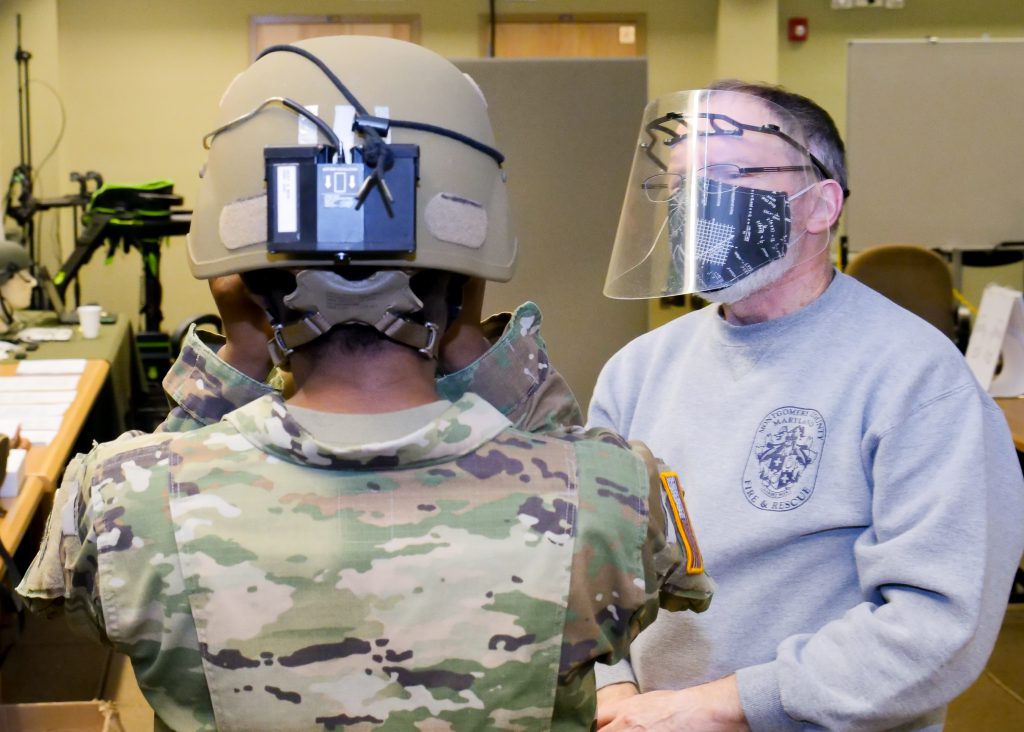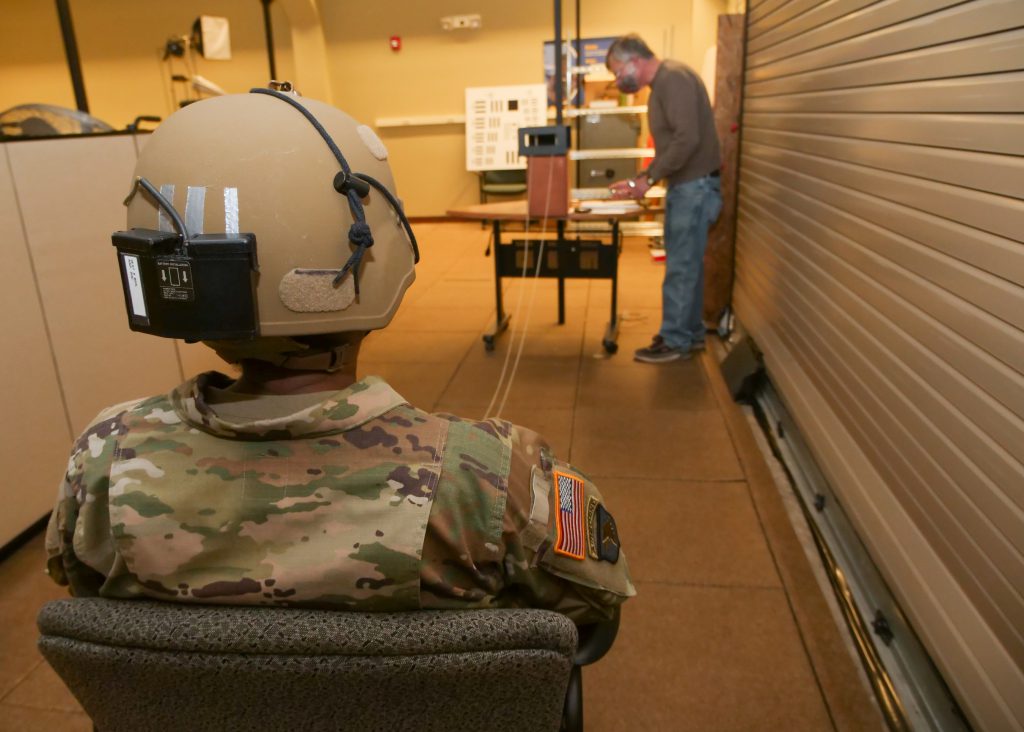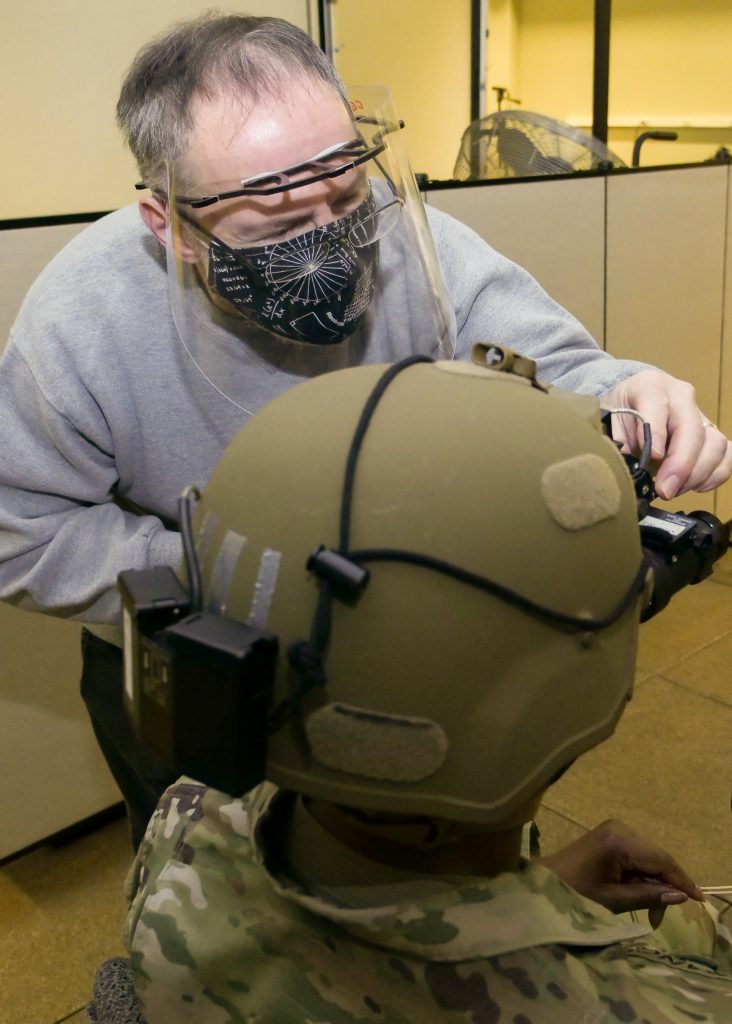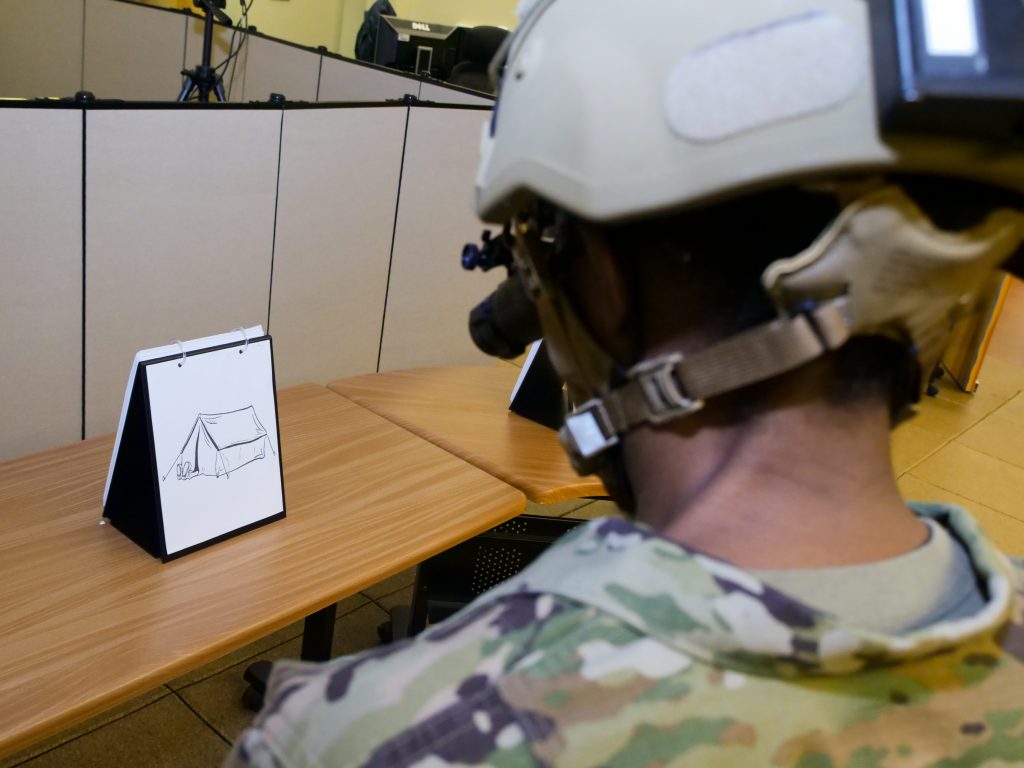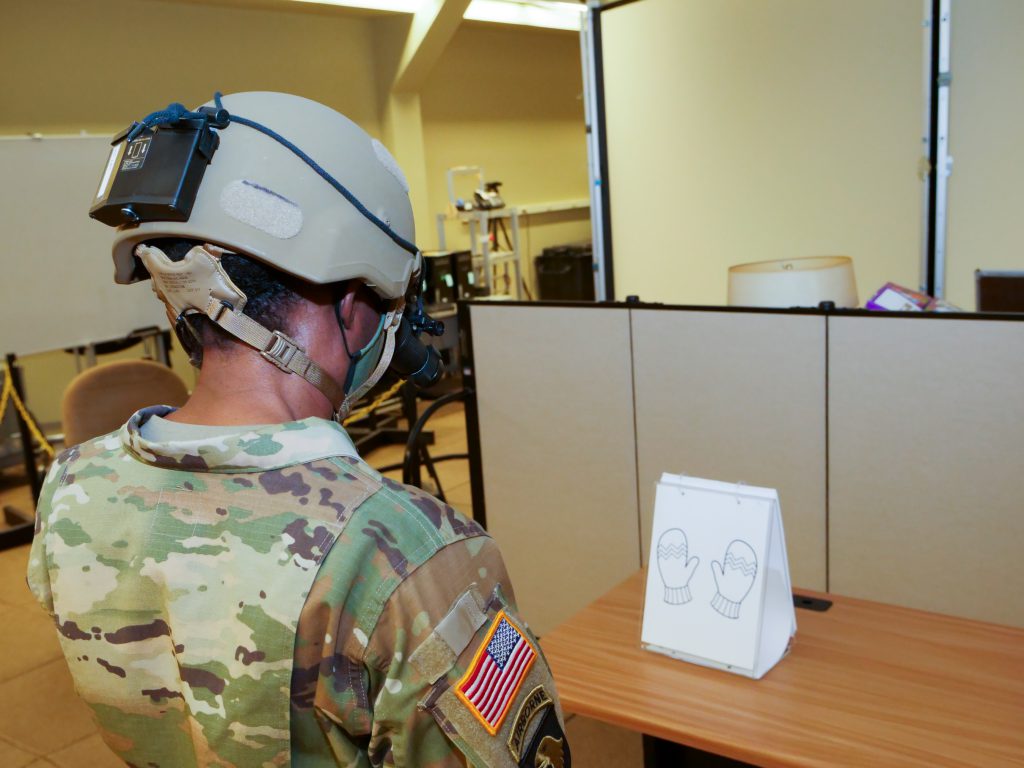Maryland Guard Supports Future Warfight, Tests New Night Vision Goggles
By Sgt. 1st Class Michael Davis, Maryland National Guard Public Affairs Office
One major objective for the Maryland Military Department is to support the warfight. Advancements in U.S. Army technology can get Soldiers an edge in an ever-changing operational environment.
Nearly 20 Maryland Army National Guard Soldiers were recently requested by the Program Executive Office Soldier to test the Enhanced Night Vision Goggle – Binocular in order to measure the effects of image intensifier tube imbalance for both target identification and depth perception at the Army Research Lab – Human Resources and Engineering Directorate facility in Aberdeen Proving Ground, Maryland.
The ENVG-B provides the U.S. Army’s combat forces with the capability to observe and maneuver in all weather conditions, through obscurants, during limited visibility, and under all lighting conditions.
The Night Vision and Electronic Sensors Directorate at Fort Belvoir, Virginia, is currently conducting research and development for the Army and works closely with many Department of Defense organizations and other government agencies to develop increased capabilities for end users.
“We were asked to examine some effects of different qualities of the night vision goggles,” said Josh Rubinstein, senior research psychologist with the Data and Analysis Center. “We designed a study looking at perceptual target identification and depth perception.”
During the target identification test, MDARNG Soldiers attempted to name various flat images on flip cards and gave verbal responses in order to measure response time and accuracy. The task was repeated several times using different images.
The Howard-Dolman Apparatus was used for the depth perception test. MDARNG Soldiers judged the distance of two rods sitting about 20 feet away.
Paul Fedele, a physical scientist with the Army Research Laboratory, helped MDARNG Soldiers administer both tests in the dark. The tests established basic operational parameters for the ENVG-B system, with determination of associated tolerances prior to fielding these systems.
“We’re extremely appreciative of the Maryland National Guard,” said Rubinstein. “They are helping us test the equipment and providing us with the Soldiers to complete the study. The caliber of effort that I’ve seen with the Maryland National Guard has been exceptional.”

